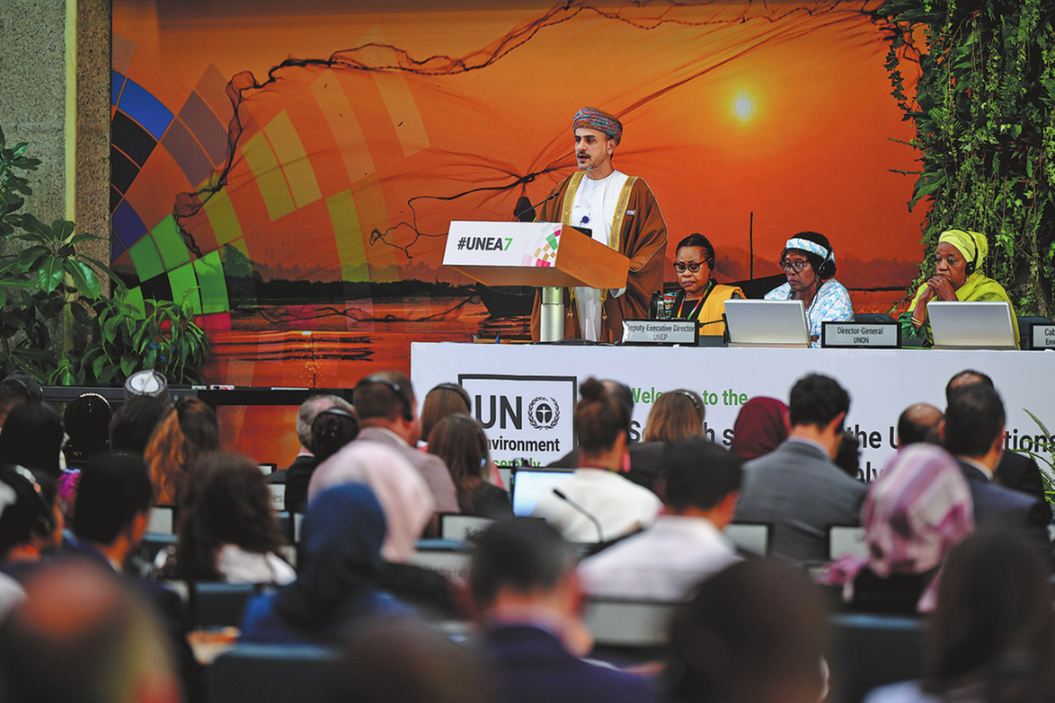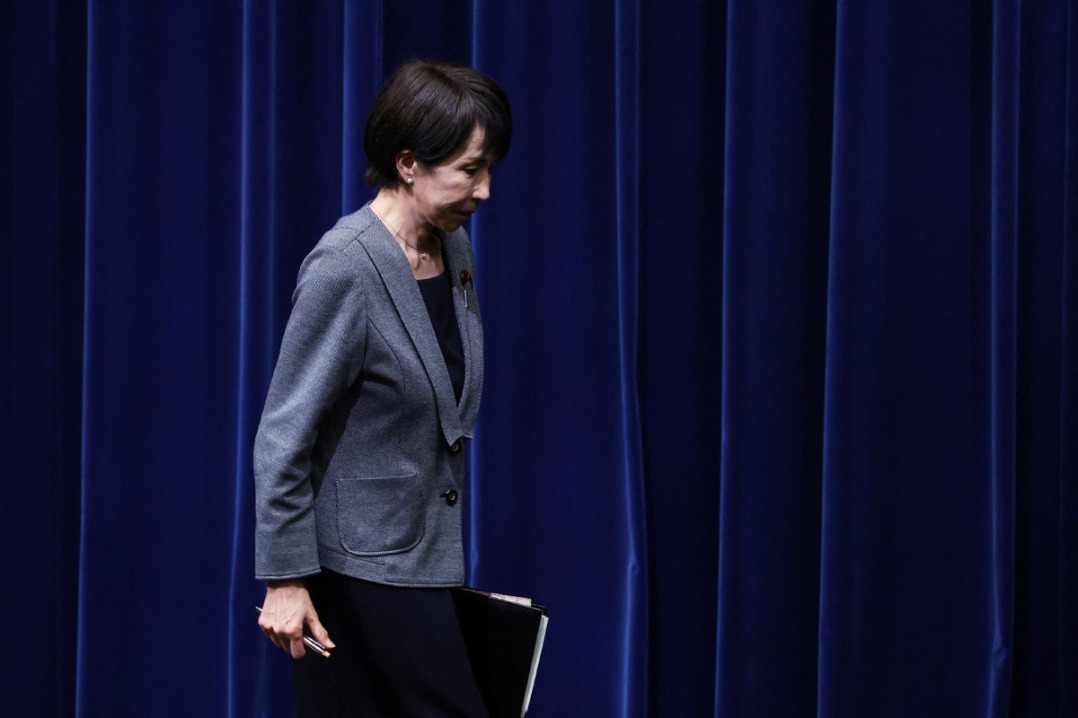Staying upbeat
Despite gloom hanging over the global economy, there are still some positive factors


Despite gloom hanging over the global economy, there are still some positive factors
Due to the impact of geopolitical tensions, coupled with rampant inflation, monetary tightening and the lingering COVID-19 pandemic, the global economy experienced stagflation in 2022.
In early 2022, the global economy got off to a good start on the back of a strong rebound in the previous year. But from the second quarter, the economy started to lose steam. According to the estimates of the Organization for Economic Cooperation and Development, the growth of world economy dropped by 0.1 percent in the second quarter of 2022 from the previous quarter. In the third quarter, driven by the robust recovery of the United States and China, the global economy regained momentum, but this was followed by weak performance in the fourth quarter, revealing that the world economy is not yet on a solid footing. Overall, the global economy registered a less-than-expected growth rate of 3 percent in 2022, compared with 6 percent the previous year.
At the same time, the world has been struggling to tackle soaring inflation. According to data released by the International Monetary Fund, global inflation reached a 10-year high of 8.8 percent in 2022, in which the rate for developed countries was 7.3 percent and that for the developing world was 9.9 percent.
Countries posted different economic performances in 2022 due to their different pandemic control and economic policies. The US economy shrank for two consecutive quarters before improving in the second half of the year, growing about 2 percent over the whole year. Other advanced economies such as the European Union, Japan and the United Kingdom recovered rapidly in the first half of the year but experienced sharp declines in the second half. Russia, Ukraine and some East European countries, which suffered heavily from the military conflict, saw negative growth. In comparison, emerging economies in Asia and the Middle East countries maintained strong growth momentum, rising 4.3 percent and 5.3 percent respectively.
Looking ahead, despite the waning impact of COVID-19, the world still faces a lot of uncertainties on its road to recovery, and it may take a few years for the economic wounds the pandemic inflicted on the global economy to heal.
Although the inflation pressure is easing — according to International Monetary Fund estimates, the average inflation level of the world will decline from 8.8 percent in 2022 to 6.6 percent in 2023 — it is still higher than the pre-pandemic level. Major economies will continue to raise interest rates. The US Federal Reserve said that it will further increase the benchmark rates to above 5 percent. The risks of the financial market and property sector have not been defused, and the risk of downward movement is looming.
In addition, fresh challenges are emerging.
Global debt has been piling up at an alarming rate. The year 2023 and 2024 will be the peak period for developing countries to pay off their debts. Coupled with rising interest rates, a strong dollar and sluggish growth, developing nations will face growing debt pressure, and the risks of defaults are increasing.
Heightened geopolitical tensions also threaten the global recovery. A dangerous escalation of the Ukraine crisis is looming large; the US' economic war and military provocations against China will continue. The country is doubling down on suppressing China's technological progress and seeks economic decoupling from China. Its efforts in these regards will have immense impacts on the world economy. The US is also perpetuating its protectionist measures such as the Inflation Reduction Act, triggering new economic conflicts. The US has become the largest source of risk to global economic stability.
Some major economies lack the impetus for growth, casting a shadow over the prospects for the global economy. The fading dynamism of the US economy, combined with soaring inflation and high interest rates, is dampening the confidence of consumers and investors alike, while the country's export growth will grind to a halt due to weak demand. But thanks to the relatively healthy balance sheet of residents, the US economy will be able to avoid a hard landing in 2023.
The United Kingdom and some East European countries will see negative growth, and the EU as a whole is projected to experience close to zero growth. In Latin America and Africa, many economies will fall into recession. With the growth momentum in much of the world losing steam, the global GDP will increase much slower than last year.
Nevertheless, there are still some positive factors.
With the relaxation of COVID-19 controls across the world, consumption and investment are picking up, restoring the confidence of market. Major economies are scaling back interest rate hikes, which will ease the financial liquidity crunch of last year, and stop the global economy from further declining.
The major driver of the world economy will be Asia. India and Southeast Asia are projected to grow by 6 percent and 5 percent respectively. As beneficiaries of the global energy shortages, Middle East countries such as Saudi Arabia saw robust growths in 2022, and are expected to maintain their growth momentum in 2023.
China has pulled through the most difficult stage. As pandemic curbs are lifted, coupled with the implementation of supportive economic policies and emergence of new growth engines, market confidence is recovering in the country. The IMF has revised upwards its forecast for China's economic growth in 2023 from 4.4 percent to 5.2 percent. Other global financial institutions such as Morgan Stanley and Goldman Sachs have also upgraded their forecast for China's economic growth.
The world economy will not suffer a recession as severe as that in 2008 and 2020 thanks to the robust growth of Asian economies. We are going to experience a "weak recession", and the yearly GDP growth is expected to be around 2 percent. With the world still plagued by uncertainties, it remains to be seen whether the global economy will rebound. In the post-pandemic era, the fundamentals of the world economy have changed, and we are entering a new era marked by high inflation, low growth, high risk and fragmentation. The world should take precautions against the challenges ahead.
The author is a researcher and director of the Center for the BRICS and G20 Studies at the China Institutes of Contemporary International Relations. The author contributed this article to China Watch, a think tank powered by China Daily. The views don't necessarily represent those of China Daily.
Contact the editor at editor@chinawatch.cn.


































